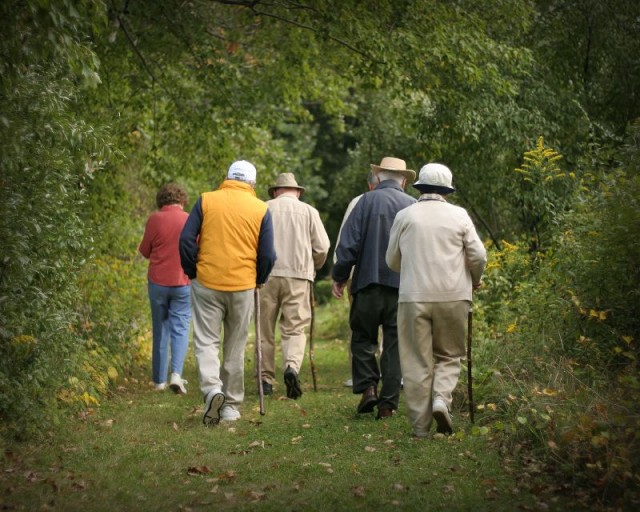“People, by and large, report that the village has made a substantial difference in their life,” says Andrew Scharlach, a professor at UC Berkeley and the principal investigator of the ongoing study that includes in-person interviews with 300 residents at nine California villages.
The study has shown that over time village members’ desire to move out of their home and community decreased.
Also, 55 to 80 percent of respondents reported a jump in quality of life. The more involved they were with the village, the higher the impact.
But, Sharlach says, there are some caveats.
People in the study self-reported big gains in social connections — knowing more people, getting out of the house more, and interacting with people more than they used to.
But when the researchers looked at data from the 133 people they followed over the course of 12 months, there was no evidence that the number of interactions or social connections these people had, had actually changed.
“If you ask, the first day of the village, ‘How many people do you know? How often do you get out of the house? How many social activities are you participating in?’ and then you come back a year later and ask the exact same questions,” says Sharlach, “there’s not a significant difference.”
He says it’s possible one year may be too soon to see significant changes in numbers, or the questions may not be capturing the growth areas for people. Another possibility is that people join the village during transitions in life and their social circle doesn’t grow, it just shifts.
Village participants’ health outcomes are another area policy experts are eager for data about. Sharlach’s team is looking at changes over time in incidents of falls, emergency department visits and hospital admissions. But he says that data is still being processed.
The weakest points the study found were around diversity and sustainability.
Villages are 94 percent white, according to studies. If they are going to be a model to serve a greater aging population, Sharlach says, the challenges that communities have reflecting the whole population need to be addressed.
He says those could include some cultural barriers. The village model is aimed at helping individuals age in place, but in some cultures families and other communities are inextricably linked to their elders. That means adapting the model to serve existing communities.
Right now, though, given that they are largely white, Sharlach says that raises questions. “invite someone who is African-American, or Latino or Asian Pacific Islander to join a village,” he says. “And they come to a meeting that is based on social connections and these aren’t people who are naturally part of their social connections, are they going to want to join this club?”
Another challenge the study found was the sustainability of Villages.
Nationally, and also in California, about 50 percent of the budgets are covered by membership dues, but the other 50 percent has to be raised.
“Whether that’s through contracts and grants or through the government, [in order to succeed for the long term] that’s the area that really needs to be figured out,” says Sharlach.
The city of San Francisco stands out as a government that has supported its two villages. In February 2013 the city gave $50,000 each to the San Francisco Village and the NEXT Village. But these grants are the exception, not the rule.
Sharlach says the study shows there are great benefits to be had from the Village model, but the challenges suggest the model really needs to be models, plural, to serve the many communities that could take advantage of them.
The UC Berkeley study followed residents at nine communities in California. Most were suburban but it included the rural Community Connections program in Plumas County and the urban San Francisco Village were also included. The remaining study sites were Ashby Village (Berkeley), Avenidas (Palo Alto), Santa Barbara Village, Wise Connections (Santa Monica), Westchester Playa Village, Real Connections (Claremont-Pomona), and Tierra Santa in San Diego.
Rachel Dornhelm wrote this story through a Fellowship from New America Media and the Gerontological Society of America, supported by AARP.
